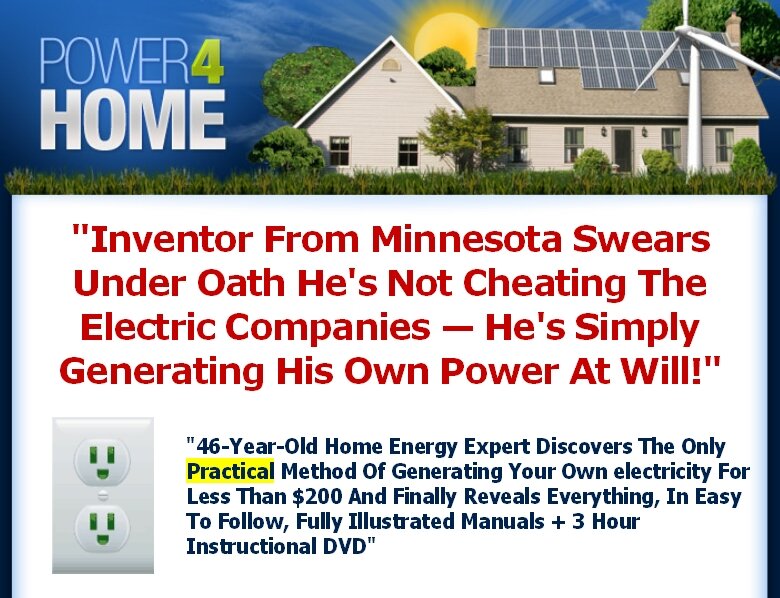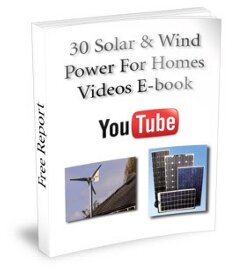Home Solar Power Canada – Making Solar Energy Works
If you are living in Canada, you may be wondering can a home solar power system works for you. One of the main concerns about using solar power for Canadian homes is the weather.
Being at the northern hemisphere, Canada has a long period of cold winter climate.
Can a residential solar power system be able to generate sufficient energy for people living in Canada?
If you are living in a cold climate location, solar energy will help you to reduce your home electricity consumption. But the challenge is putting more effort to make your home energy efficient.
During winter time, a lot of energy is used up to generate heat to keep your home warm. Some of the heat may be lost if your house is not properly insulated.
You may not be able to feel the small amount of heat escaping from your house, but your thermostat will. The thermostat will sense the drop in temperature and crank up the heater to run longer and harder. That in effect will hike up your electricity bill.
Even if you are using a home solar power system to supplement your energy usage, some of the power is still being wasted because your home is not well insulated.
Therefore, if you are living in the freezing areas of Canada and you want to use solar energy to reduce your home electricity consumption, put an effort to make your home well insulated.
Call up a contractor to get an estimate on how much it would cost to replace the old insulation. The amount will be a small sum compared to the money you will need to invest for a complete home solar power system.
Saving Cost With DIY Solar Power System
If you want to save cost on a residential solar power system, you can do so by building the system yourself. You can even make the solar panel via Do It Yourself (DIY) approach with inexpensive building material.
What you will need is a good step by step instructional guide. For a complete DIY solar guide, check out John Russel’s Power4Home e-book. He will show you how to make the solar system with minimal cost.
Power 4 Home Complaints – Why People Are Complaining About John Russel Power4Home

If you were to search the web about complaints on Power4Home, you will find lots of them. But why are people complaining about John Russel’s Power4Home e-book?
From my experience, the main reason is because they were unable to get their refund.
Just like most of the information products offered on the internet, every purchase comes with a 60 days money back guarantee.
If you’ve bought an e-book and you are not satisfied with your purchase, you can ask for your money back within 60 days from the purchase date.
That is common practice on the web. That’s why buying an e-book online is much better compared to buying a paperback book at a book store.
For whatever reason, some people are not happy with their online purchase. It is the same with John Russel’s Power4Home also. The mistake people made is going back to its main web site at www.power4home.com to request for a refund.
Here’s the kicker, that web site do not handle refund request.
Anyone trying to get a refund there will not get any support or any respond to their email. And that is the cause for their frustration.
So where are they supposed to go to get their refund?
You get it at Clickbank customer support center.
Clickbank is the largest company that sells primarily information products and software online. They are a trusted company and handle millions of dollars in online transactions every year.
Anyone that bought the Power4Home e-book and wish to get a refund, use the link below.
http://www.clickbank.com/help/vendor-help/vendor-tools/customer-support-ticket-system/
Don’t waste your time complaining about your purchase. Just send an email to Clickbank and request for a full refund. You don’t even have to give them a reason. Just make sure you get it done within 60 days from your purchase date.
I hope this post is helpful and if you wish to get a copy of John Russel’s Power4Home, click on the link below.
Performing a Charging Test On A Home Solar Power System
When you have all the solar components such as the solar panel, meter gauges, charge controller, battery bank and power inverter all connected, the next step is to do a charging test to make sure everything is working fine.
First, get your multi-meter and set it on DC amperage. Clamp it on the live wire coming out from the charge controller going right to the battery. See what kind of juice you are getting. You should see a DC amperage figure on the multi-meter.
Since the battery is running on 12 volts, you can calculate how much power is going into the battery by multiplying the amperage (I) with the voltage (V). That will determine how much power in watts you can withdraw from the batteries.
When you want to find out how long the battery will last, it actually depends on what kind of load is consuming the power. If you are trying to run a 150 watt flood lights on the outside of your house at night, the deep cycle batteries of your solar system will only last for a couple of hours.
Therefore, when using renewable energy such as solar, it is best to go for economical lighting fixtures such as using compact florescent bulbs that draws only 800 milliamps. Such energy efficient light bulbs will run for weeks by using power from the battery.
If you don’t want to use the power inverter, you can even use a 12 volt marine activated light and it will work directly with the 12 volt battery. You don’t need to use the inverter at all thus extending the battery output.
Depending on what you actually want to run, you choose your lightings and your loads and that will determine how much run time you will get out of your home solar system battery bank.
DIY Home Solar Power System Manual
Do you want to know how to use solar power at home to reduce your electricity bill? If you do, check out the Earth4Energy e-book by Michael Harvey.
The manual will show you to build a low cost solar panel and the procedure to setup the charge controller, battery bank, power inverter etc.
Check out the Earth 4 Energy information post on this blog to find out how the e-book can benefit you.


